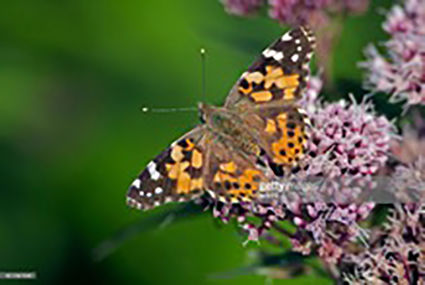Painted Lady Butterfly makes an appearance
June 27, 2019
Thistle caterpillar is widespread across many states this year, including Montana, according to Extension Agent Mary Rumph. The caterpillars eating thistle are the painted butterfly, also known as the thistle caterpillar. It has been common this June in several states and has been reported from other areas of Montana this month. The adult butterflies migrate from southern US and Mexico north all the way into Canada, stopping and laying eggs as they go. Thistle is a preferred host but they can feed on more than 100 plant species, including mallow or hollyhock leaves and some crops including sunflower and canola.
The painted lady begins its life cycle as an egg that is the size of a pin head. Eggs are pale green with 12 to 14 longitudinal ridges. The incubation period is 3 to 5 days.
The larva (caterpillar) eats continually for 5 to 10 days before it pupates. The blackish caterpillar has long spines on each segment; there are yellow-green stipes and large white dots. The caterpillar grows up to 1.25 inches long. It builds a silky, webbed nest as it feeds. As the larva grows, it shed its skin (this is called molting). The time between each shed is called an instar; each instar has slightly different coloring.
When the caterpillar has grown to maturity, it forms a chrysalis or pupa. It pupates by hanging upside-down from a leaf or branch and attaches itself with a single silken string. An adult (in the form of a butterfly) forms from the chrysalis which becomes almost transparent when the butterfly is about to emerge, 7 to 10 days later.
When an adult emerges from the chrysalis, it hangs upside down and pumps blood into its four wings, inflating them. Then it waits for its delicate wings to dry. It can fly a few hours after emerging.
The adult Painted Lady is mostly black, brown and orange with some white spots; the underside is gray with white and red markings. The adult has about a 2-3" wingspan. It sips nectar, mating about a week after emerging; and living for only 2 weeks.




Reader Comments(0)